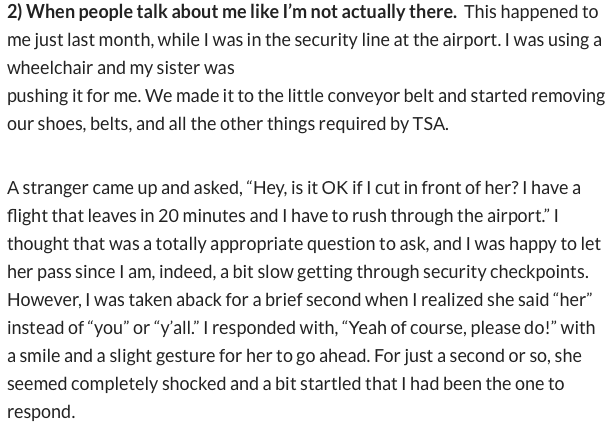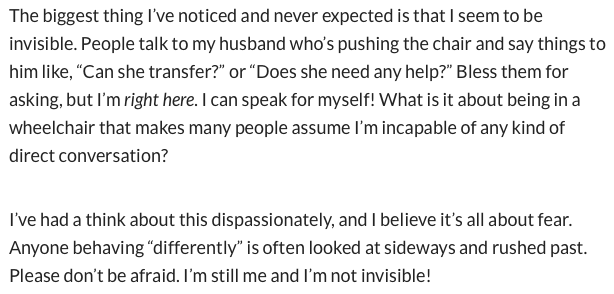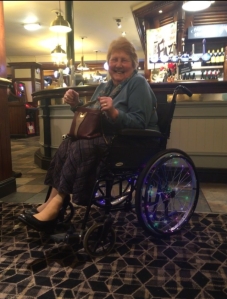My aim for this blog post is to raise awareness to a big issue that wheelchair users face; the feeling of being invisible.
After gathering primary research from observing my family members whilst out in their wheelchair, some of their comments about our trip out made me think deeply about the frustrations and inequalities that disabled people face in everyday life. The comments that I connected with the most is the feeling of being invisible to others around them. Disabled or not, we are all the same on the inside, we all have a beating heart, red blood, and organs. So why are disabled people being treated differently? Is it because they could be a wheelchair user or different to everyone else? Being treated differently isn’t a nice thing to be put through, and there are millions of people in the world that will have been treated differently for something or another, without an explanation, so why do people think it’s acceptable to treat disabled people differently?
I have done some online research and looked into whether other disabled people may feel, the same due to being disabled and I found some touching blog posts of individuals sharing their experiences with this issue. After reading posts shared by wheelchair users it made me think, we live in such a selfish and ignorant world. I understand that there are many people that maybe don’t understand disability or may feel uncomfortable being around someone who has a disability, but I wonder if these able-bodied people think about feelings and emotions of other people.
I am now going to share a series of articles and blog posts I have found, made by wheelchair users explaining their experiences of how they have felt invisible to the public.
When being in a wheelchair made me feel invisible (Brook.L (2017)

When people talk about me as if I’m not there because I have a disability (Hardy. M (2016)



When I feel invisible in my wheelchair (Hugh-Jones. L (2016)

References:
- When being in a wheelchair made me feel invisible. (Brooke. L (2017) https://themighty.com/2017/01/when-being-in-a-wheelchair-made-me-feel-invisible/
- When people talk about me as if I’m not there because I have a disability (Hardy. M (2016) https://themighty.com/2016/08/being-treated-as-invisible-because-i-have-a-disability/
- When I feel invisible in my wheelchair (Hugh-Jones. L (2017) https://themighty.com/2017/04/being-treated-as-invisible-when-using-a-wheelchair/













